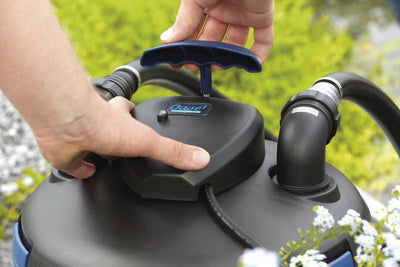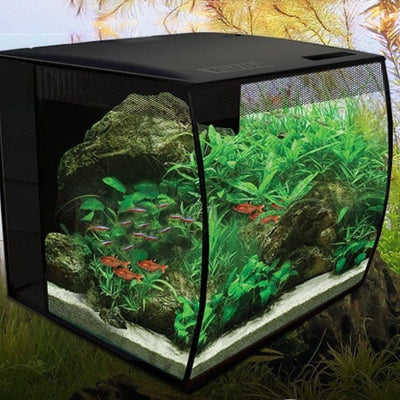 Are you considering adding a Plecostomus catfish to your aquarium but have no clue where to start? Look no further! In this ultimate guide, we will provide you with everything you need to know about Plecostomus catfish.
Are you considering adding a Plecostomus catfish to your aquarium but have no clue where to start? Look no further! In this ultimate guide, we will provide you with everything you need to know about Plecostomus catfish.Plecostomus catfish, also known as "plecos," are a popular choice for aquarium enthusiasts due to their unique appearance and beneficial behaviour. These fascinating fish, known for their suction cup-like mouths, can add a touch of beauty and functionality to any tank.
In this comprehensive guide, we will explore various aspects of Plecostomus catfish care. From tank setup and water requirements to dietary needs and compatibility with other fish, we will cover it all. You'll learn about the different Plecostomus species that are popular here in Australia, their average size, lifespan, and behaviour, helping you make informed decisions when choosing the right catfish for your aquarium.
So, whether you're a seasoned fish keeper or a beginner looking to venture into the world of Plecostomus catfish, this guide will be your go-to resource. Get ready to dive in and become an expert in Plecostomus catfish care!
Types and Varieties of Plecostomus Catfish
Plecostomus catfish are a diverse group of fish with various species and varieties available in the aquarium trade. Understanding the different types will help you make an informed decision when selecting the right Plecostomus for your tank.
1. Common Plecostomus (Hypostomus plecostomus): This is one of the most recognisable Plecostomus species. They have a dark brown or black body with light spots and a flat, wide head. Common Plecos can grow up to 30cm in length, making them suitable for larger aquariums. They are known for their ability to consume algae, making them excellent tank cleaners.
2. Bristlenose Plecostomus (Ancistrus sp.): Bristlenose Plecos are smaller than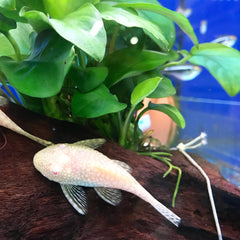 Common Plecos, reaching an average length of 10-15cm. They have a wider range of colours and patterns, including albino and longfin varieties. Bristlenose Plecos are known for their bristle-like appendages on their snouts, which are more prominent in males. They are excellent algae eaters and can thrive in smaller tanks.
Common Plecos, reaching an average length of 10-15cm. They have a wider range of colours and patterns, including albino and longfin varieties. Bristlenose Plecos are known for their bristle-like appendages on their snouts, which are more prominent in males. They are excellent algae eaters and can thrive in smaller tanks.
3. Rubber Plecostomus (Chaetostoma sp.): Rubber Plecos are known for their rubbery-like appearance and unique patterns. They have a slender body and can grow up to 20 cm in length. These catfish are less common in the aquarium world but are sought after due to their interesting visual appeal.
4. Sucking Catfish (Gyrinocheilus aymonieri) : One of our most popular selling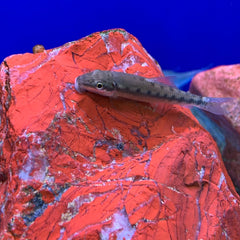 catfish in our aquarium! These hardworking catfish are hardy, can grow up to 12cm in length. They will happily co exist with a few others and will help keep any algae under control.
catfish in our aquarium! These hardworking catfish are hardy, can grow up to 12cm in length. They will happily co exist with a few others and will help keep any algae under control.
5. Zebra Plecostomus (Hypancistrus zebra): Zebra Plecos are known for their striking black and white zebra-like stripes. They are a rare and expensive species, making them a coveted addition to any aquarium. These catfish are relatively small, with males growing up to about 10cm and females slightly larger. Zebra Plecos require pristine water conditions and specialised care.
6. Gold Nugget Plecostomus (Baryancistrus sp.): Gold Nugget Plecos are prized for their vibrant golden colouration and unique patterns. They have a wider head and a stout build, reaching a maximum length of around 18cm. These catfish require ample hiding spots in the tank and appreciate a varied diet.
Remember to research each species thoroughly before making a decision. Understanding their specific requirements and compatibility with other fish in your tank is crucial for their well-being.
Habitat and Tank Requirements for Catfish
 Creating a suitable habitat for Plecostomus catfish is essential for their overall health and well-being. Here are some key factors to consider when setting up their tank.
Creating a suitable habitat for Plecostomus catfish is essential for their overall health and well-being. Here are some key factors to consider when setting up their tank.
1. Tank Size: Plecostomus catfish can vary in size, so it's important to provide them with an adequately sized tank. Smaller species like Bristlenose Plecos can thrive in tanks as small as 20 gallons, while larger species like Common Plecos require tanks of at least 75 gallons or more.
2. Water Parameters: Plecostomus catfish prefer water with a neutral pH level ranging from 6.5 to 7.5. The temperature should be kept between 24 to 28 degrees Celsius. Ensure the water is well-filtered and has minimal ammonia and nitrate levels.
3. Tank Decorations: Plecostomus catfish appreciate a well-decorated tank with plenty of hiding spots. Provide them with caves, driftwood, and rocks to create a natural-looking environment. Live aquarium plants can also be added, but be aware that Plecos might nibble on them.
4. Substrate: Use a fine-grained substrate like sand or smooth gravel to prevent injury to Plecostomus' delicate barbels. Avoid sharp or rough substrates that can cause abrasions.
5. Tank Lid and Lighting: Plecostomus catfish are known to be excellent jumpers, so it's essential to have a secure lid on the tank. Use low-intensity lighting or provide shaded areas to replicate their natural environment.
Remember to regularly monitor and maintain the tank conditions to ensure the well-being of your Plecostomus catfish. Regular water changes and filter cleanings are necessary to keep the water parameters stable.
Feeding Habits and Diet of catfish
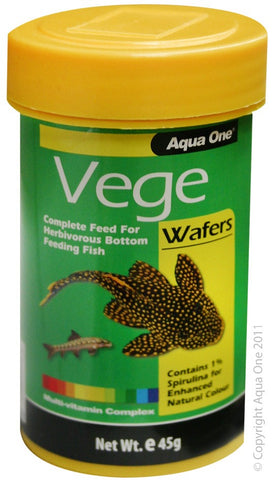 Plecostomus catfish are primarily herbivorous, but their diet can vary depending on the species. Providing them with a balanced and varied diet is crucial for their health and vitality.
Plecostomus catfish are primarily herbivorous, but their diet can vary depending on the species. Providing them with a balanced and varied diet is crucial for their health and vitality.
1. Algae and Vegetation: Plecostomus catfish are excellent algae eaters and can help control algae growth in the tank. They will graze on various types of algae, including green spot algae, diatoms, and even hair algae. However, relying solely on algae as their food source may not provide sufficient nutrition.
2. Supplemental Feeding: Alongside algae, Plecostomus catfish should be offered a variety of supplemental foods to ensure a well-rounded diet. Prepare a combination of sinking pellets, wafers, and fresh vegetables like zucchini, cucumber, and spinach. These can be blanched before feeding to make them easier for Plecos to consume.
3. Feeding Frequency: Plecostomus catfish are typically active during the night, so it's best to feed them in the evening or use an automatic feeder. Feed them once or twice a day, ensuring they consume the food within a few minutes. Overfeeding can lead to health issues and water quality problems.
4. Food Availability: It's important to provide multiple feeding stations in the tank to prevent dominance by larger fish. Use sinking algae food and place food in different locations to ensure all Plecos have access to food.
Remember to observe your Plecostomus catfish during feeding to ensure they are actively consuming the food. Adjust the diet and feeding frequency if necessary to maintain their health and prevent obesity.
Tankmates and Compatibility
When choosing tankmates for Plecostomus catfish, it's essential to consider their compatibility and potential aggression. Here are some suitable tankmates for Plecos:
1. Community Fish: Plecostomus catfish are generally peaceful and can coexist with a variety of community fish, such as tetras, gouramis, and rasboras. Avoid keeping them with aggressive or territorial species that might harass or injure them.
2. Bottom-Dwelling Fish: Plecos are primarily bottom-dwellers, so it's best to choose tankmates that occupy different areas of the tank. Species like Corydoras catfish and loaches can make great companions for Plecostomus.
3. Avoid Small Fish: Plecostomus catfish have strong sucking mouths and might accidentally injure or consume small fish. Avoid keeping them with species that are significantly smaller or have long, flowing fins.
4. Avoid Other Plecos: While it might be tempting to have multiple Plecos in the same tank, it's generally not recommended. Different Plecostomus species can compete for territory and resources, leading to aggression and stress.
When introducing new tankmates, monitor their behaviour closely and be prepared to make adjustments if any aggression occurs. Providing ample hiding spots and territories can help alleviate potential conflicts.
Common Health Issues and Care Tips for Catfish
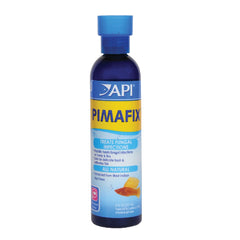 Plecostomus catfish are generally hardy fish, but they can still be susceptible to certain health issues. Understanding these common problems and implementing appropriate care measures is crucial for their well-being.
Plecostomus catfish are generally hardy fish, but they can still be susceptible to certain health issues. Understanding these common problems and implementing appropriate care measures is crucial for their well-being.
1. Diseases: Plecos can be prone to fungal and bacterial infections, especially if water quality is poor or there are fluctuations in temperature. Regular water changes, maintaining stable water parameters, and quarantine procedures for new fish can help prevent diseases.
2. Barbel Erosion: Plecostomus catfish have sensitive barbels that can erode if exposed to rough substrates or poor water conditions. Ensure the tank substrate is smooth and regularly check the barbels for any signs of erosion. If erosion occurs, improve water quality and provide a stress-free environment to promote healing.
3. Malnutrition: Plecostomus catfish require a varied diet to obtain all the necessary nutrients. Lack of proper nutrition can lead to health issues like bloating, fin erosion, and decreased immunity. Supplement their diet with high-quality sinking pellets and fresh vegetables to ensure they receive a balanced diet.
4. Parasites: Plecostomus catfish can be susceptible to external parasites like ich and flukes. Regularly observe their behaviour and appearance for any signs of infestation, such as flashing or white spots. If parasites are detected, treat the entire tank with appropriate medications.
Regular observation, maintaining a clean and stable tank environment, and providing a balanced diet are key to preventing health issues in Plecostomus catfish.
Catfish Breeding and Reproduction
Breeding Plecostomus catfish in a home aquarium can be a rewarding experience. However, it can be challenging and requires specific conditions for successful reproduction. Here are some key considerations:
1. Differentiate between Males and Females: Determining the sex of Plecos can be challenging, especially when they are young. Males often develop bristle-like growths on their snouts, which are absent in females. Additionally, males tend to have a broader head and are generally larger than females.
2. Breeding Setup: To encourage breeding, provide the Plecostomus with hiding spots like caves or PVC pipes. These will serve as ideal spawning areas. Ensure the water parameters are suitable, and the temperature is slightly warmer than usual, around 27 to 29 degrees Celsius.
3. Spawning Behaviour: During the breeding process, males will clean and prepare the chosen spawning site. Females will lay adhesive eggs on the walls of the cave or pipe, and males will fertilise them. After spawning, the male will guard the eggs until they hatch.
4. Egg Care: Plecostomus catfish are known for their parental care. The male will fan the eggs to provide oxygen and protect them from fungus. It's essential to provide a separate breeding tank or area to prevent other tankmates from consuming the eggs.
5. Fry Care: Once the eggs hatch, the fry will attach themselves to the walls of the cave or pipe using their mouths. After a few days, they will start exploring and feeding on microscopic organisms. Offer them appropriate fry food or finely crushed flakes to ensure their growth and development.
Breeding Plecostomus catfish can be a complex process, and success may not be guaranteed. If you're interested in breeding, research specific breeding techniques for the Plecostomus species you own and be patient throughout the process.
Tips for Choosing and Caring for Plecostomus Catfish
 To ensure the well-being of your Plecostomus catfish, here are some additional tips to consider:
To ensure the well-being of your Plecostomus catfish, here are some additional tips to consider:
1. Research Before Purchasing: Thoroughly research the specific species of Plecostomus you plan to keep. Understand their specific care requirements, potential size, and compatibility with other fish in your tank. Our knowledgeable staff can assist you with this selection.
2. Provide Adequate Hiding Spots: Plecos are nocturnal and appreciate hiding spots to rest during the day. Driftwood, caves, and rocks can offer them suitable hiding places.
3. Monitor Water Parameters: Regularly test and maintain stable water parameters, including temperature, pH, and ammonia levels. Performing regular water changes will help keep the tank environment clean and healthy.
4. Avoid Overstocking: Plecostomus catfish require sufficient space to thrive. Avoid overcrowding the tank and ensure each fish has ample swimming and hiding space. Plecostomus catfish can make a wonderful addition to any aquarium. Their unique appearance, beneficial behaviour, and relatively low maintenance requirements make them a popular choice among fish keepers. By following the guidelines outlined in this ultimate guide, you'll be well-equipped to provide the optimal care and environment for your Plecos catfish.
Remember to consider tank setup and water requirements, provide a balanced diet, and choose compatible tank mates to ensure the health and happiness of your catfish. With the right knowledge and preparation, your Plecostomus catfish will thrive and become a captivating centerpiece in your aquarium. Happy fishkeeping!
© weknowpets 2024


